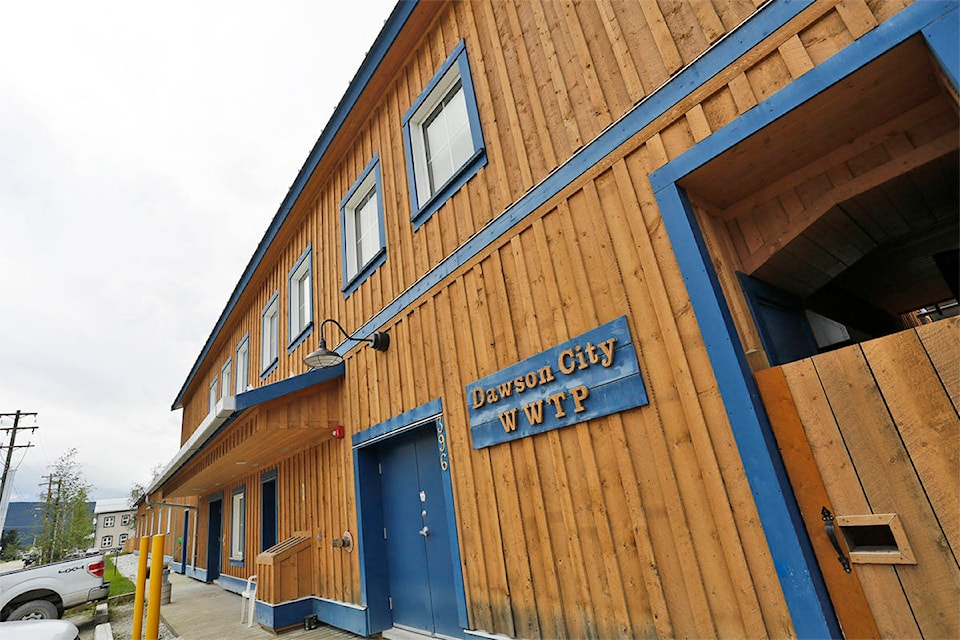Dawson City’s vexed wastewater treatment facility is to be abandoned after years of shortcomings.
The Yukon government is stepping in to help the municipality draft plans for what could be a conventional sewage lagoon, an option, said John Streicker, minister of Community Services, that is “way less expensive to operate.”
The territorial government announced the move on Jan. 15, calling the current facility unsustainable.
“We know that the plant is treating the effluent,” Streicker said. “We’re compliant. But we also know that the costs are extremely high to run year-over-year.
“This was not a good option for Dawson.”
It costs the Government of Yukon and City of Dawson approximately $950,000 annually to operate the plant.
Streicker added that the facility has a limited life span, and, while it’s passing compliance, it isn’t doing so “with flying colours.”
“It’s just complying,” he said, noting that as Dawson grows, so, too, would costs to meet standards.
The problem is that this type of facility wasn’t compatible with the climate specific to the region, he said.
“The plant that was built was never tested in this type of climate before, so in some ways it was a trial to see that it would work,” Streicker said.
Conversations about what types of facility options could work in Dawson have yet to be had, he said.
“It will definitely take time to do that.”
Wayne Potoroka, the mayor of Dawson, said there have been frustrations over the years because the design was originally touted as an idea that would work.
“This is not the attention that Dawson City wants,” he said. “This is not the discussion we want to be having about our infrastructure.”
That alternative plans would be required came as no surprise, Potoroka said.
“There is no gear but the forward gear in local government,” he said. “You just have to hopefully learn from the mistakes that were made and move forward and do what you gotta do to make sure the needs of the community are met.”
A new facility will be operational by 2026 or earlier, according to a press release.
A cloth disk filtration system was recently installed, with the Yukon government covering a third of the price ($500,000) and Corix contributing the rest.
The $950,000 annually to run the facility is split between the Yukon government and Dawson, the latter contributing $210,000, Streicker said.
The facility’s original projected operational cost was $280,000 annually.
By comparison, Whitehorse pays between $100,000 and $200,000 annually for its sewage lagoon-style facility, which is much bigger.
To date, the Dawson wastewater treatment facility has cost $35 million, which includes the upgraded filtration system, Streicker said.
Asked if the facility was a mistake, Streicker said “it didn’t turn out the way it should have.”
“It’s hard for me to use the word ‘mistake,’ because I wasn’t here when the decision was taken,” he said.
“Look,” he continued, “we’re all frustrated, and I want to acknowledge that this has cost all Yukoners.”
The plant, completed in 2012 by Corix Water Systems, was operational a year later. Corix operated the plant until February 2017, when the Yukon government took over.
Corix did not return multiple requests for comment.
The deep-shaft system, where waste is stored underground and broken down, failed water quality tests for years.
That contract was worth about $27 million, according to a statement of claim filed by the government in 2017.
The Yukon government originally sued the company for the full amount, claiming breach of contract and negligence.
“When the action was started it was for the entire value of the contract, because at that point we didn’t have a working plant,” said Ian Fraser, legal counsel with the Department of Justice, in an interview.
In the intervening time, negotiations between Corix and the government continued and the plant became operational.
Now the government is asking for much less from Corix.
“The only issue left in dispute, not fully reflected in the pleadings anymore, is the fact there’s increased operating costs for the plant,” Fraser said. “That’s the discussions we’re having with Corix now.”
It’s difficult to put a finger on how much money is being claimed currently, he added, but the Yukon government is paying about $1 million more in operational costs for the facility than anticipated.
“It’s not clear all of that’s on Corix,” he said. “The amount that we are claiming from Corix, if you include the labour costs, comes in the ball park of $400,000 and that would be for the life cycle of the plant.”
Contact Julien Gignac at julien.gignac@yukon-news.com
